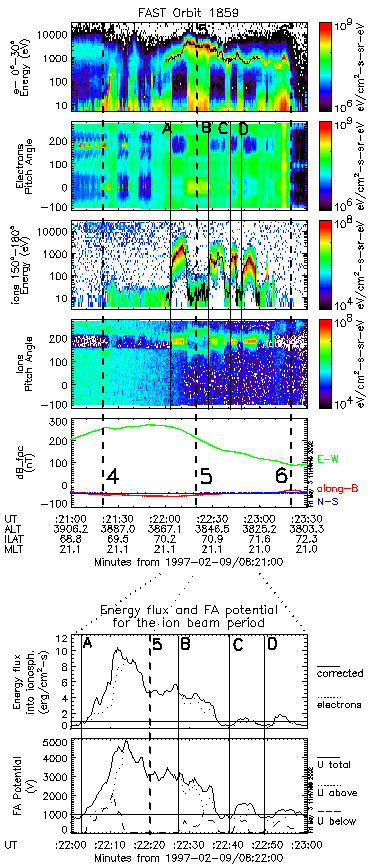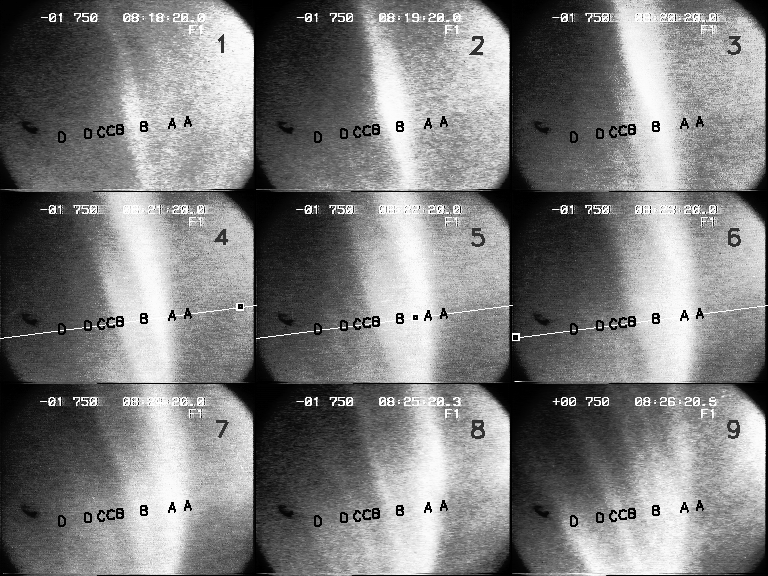 |
Fig.1 Top Energy and pitch-angle
spectrograms for downgoing electrons (panels 1,2) and upgoing
ions (panels 3,4). The perturbation magnetic field is shown in
panel 5. The dotted cuts 4, 5, 6 relate to the frames in
Fig.2. The full-line cuts correspond to the right marks of the
pairs 'A-A'... 'D-D' in Fig.2.
Bottom Electron
energy flux at 110 km (panel 1) and field-aligned potential
drop (panel 2).
|
|

|
Fig.2 Selection of auroral images, 1 minute
apart, taken on February 9, 1997, UT 8:18--8:26. North and
East are at the left and bottom side. FAST (indicated as a
small square) crosses the camera's field of view in frames 4,
5, 6. The pairs 'A-A' ... 'D-D' show the respective ion
beams. Marking all the frames does not imply that ion beams
are necessarily there and is only meant to provide a reference
for the evolution of luminosity.
A typical FAST overpass (Fig.1) shows a large
inverted-V with embedded ion beams --- configuration most
probably resulted from altitude variations of the bottom side of
the AAR (McFadden et al., 1999). Ground optical data in
conjunction with FAST (Fig.2) enable relating features measured
by the satellite with the evolution of the auroral structure.
On the longer time scale of the optical observation one can see
that the more energetic part of the inverted-V (A to B) is
relatively stable, denoting an equillibrium state along the
respective flux tubes. On the other hand small enhancements in
the energy flux (C and D) develop into visible arcs, consistent
with a positive feedback mechanism (Sato, 1978). A
peculiar feature is the association of ion beams with the energy
flux enhancements C and D, and further with the visible arcs.
This association supports simulation results by Ergun et
al., 2000, who found that the altitude of the bottom side of
the AAR is determined by the balance between backscattered and
secondary electrons, and ionospheric ions. An increase in the
energy flux results in a larger backscattered and secondary
flux, which leads to the lowering (towards a higher ion density)
of the bottom side of the AAR.
|
References:
Ergun, R.E. et al.,Geophys. Res. Lett. 27, 4053, 2000.
Marghitu, O. et al., Phys. Chem. Earth 26, 223, 2001.
McFadden, J.P. et al, J. Geophys. Res. 104, 14453, 1999.
Sato, T, J. Geophys. Res. 83, 1042, 1978.
|
Contact: Dr. Octav Marghitu
|
|
